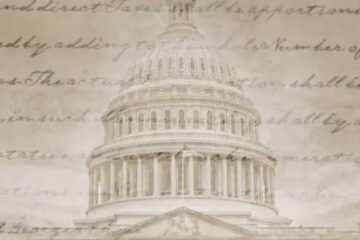Sunrises at our home on the Northern Neck on the Potomac River and the Chesapeake Bay are stunning. Our Creator God formed them marvelously. Fed by the Potomac along with 149 other major rivers and streams and 100,000 smaller tributaries, the Bay is a precious resource that once teemed with life.
In his 1612 account of the Chesapeake region’s riches, Captain John Smith noted, “The Bay and riuers [rivers] have much marchandable [marketable] fish…” including prominent oyster reefs. Smith described the Bay as “very goodly” where “heaven and earth never agreed better to frame a place for means of habitation.” Four centuries later, the Bay’s abundance has diminished significantly. But it remains a wonderous habitation, and we have the means to restore it for our pleasure, recreation, and commercial use.
As a boy, I recall spending many pleasant vacations on the Northern Neck, bounded by the Potomac and Rappahannock rivers and the Bay. Then those waters were under profound stress with brown foam washing ashore, the product of pollution and human waste. An abundance of bioluminescent algae—prompted by nutrient pollution—glowed when we stirred the water with our crab nets trying to catch jimmies clinging to a piling. During those summer days, we blithely ignored the threat hazardous chemicals posed to the Potomac and the Bay. Not so today.
During my time in the General Assembly, I was fortunate to be named a member of the interstate Chesapeake Bay Commission, charged with Bay cleanup and composed of legislators from Maryland, Pennsylvania, and Virginia. In time I would chair that commission and become keenly aware of restoration efforts and the immense challenges we faced.
Virginia’s record in that regard is very admirable. Through a major contribution of revenues appropriated by the General Assembly, the Commonwealth accelerated the retrofitting of its nearly ninety wastewater treatment plants that deposited significant pollutants into the Bay and its tributaries. Doing so addressed fully forty percent of the problems caused by what we referred to as “point source” pollution. Nonetheless, that was the low hanging fruit. What remains to be done is the reduction of pollution that derives from “non-point” sources, particularly nitrogen, phosphorus, and sediment—the three major threats to the Bay’s health.
Those perils originate primarily from agricultural fields and stormwater runoff from our urban areas and streets. Combined sewer overflows in major urban centers are also a problem during downpours. All are significant challenges that will require equally significant costs. And it will take leadership to do this work.
In that regard we are fortunate. Like prior administrations that labored to restore the Bay, Governor Glenn Youngkin brings a much-needed emphasis to the table. In his first address to the General Assembly, he declared his support for “fully funding best management practices on our farms in order to protect our soil and water” and that “we are going to see the cleanup of the Chesapeake Bay to the finish line.” He did so in the current budget. At a recent meeting of the Chesapeake Bay Executive Council, he further stated that we must set “reasonable” and “achievable goals.”
He’s right. Picking a year on the calendar hasn’t been effective in the past and isn’t today with 2025 goals that are unachievable. Political platitudes and arbitrary dates won’t work. We need program planning that sets tangible and measurable objectives. As we used to say in the military, that which gets inspected gets done. Put another way, that which is measured creates accountability. And that accountability must include the public and private sectors if we are to achieve cleanup and restoration objectives.
The governor’s extensive background in business is evident in his approach. And that path hopefully will include four important elements.
First, a focused effort to identify where best practices can be deployed and implemented to accelerate programmatic goals.
Second, implementation of those best agricultural practices to attain “bang for the buck.” That means targeting where they are most needed.
Third, a redoubled effort to closely monitor our progress by establishing more water monitoring stations with technology that allows us to see results and adjust our practices accordingly.
Finally, building new, innovative, and exacting private-public partnerships with urban localities to reduce storm water runoff as well as repair combined sewer overflows that should have been addressed years ago. No more stalling.
The Bay isn’t an ancient specimen we put behind a glass enclosure in a museum. It’s there for our present recreation and commerce. We have a lot of work to do. When Army soldiers are issued orders, they occasionally sound off with the robust affirmation “Hoo-aah!” Yet sometimes I had to remind my troops that we needed less “Hoo-aah” and more “Do-aah.” The Bay cleanup needs substantial “do-aah.”



0 Comments